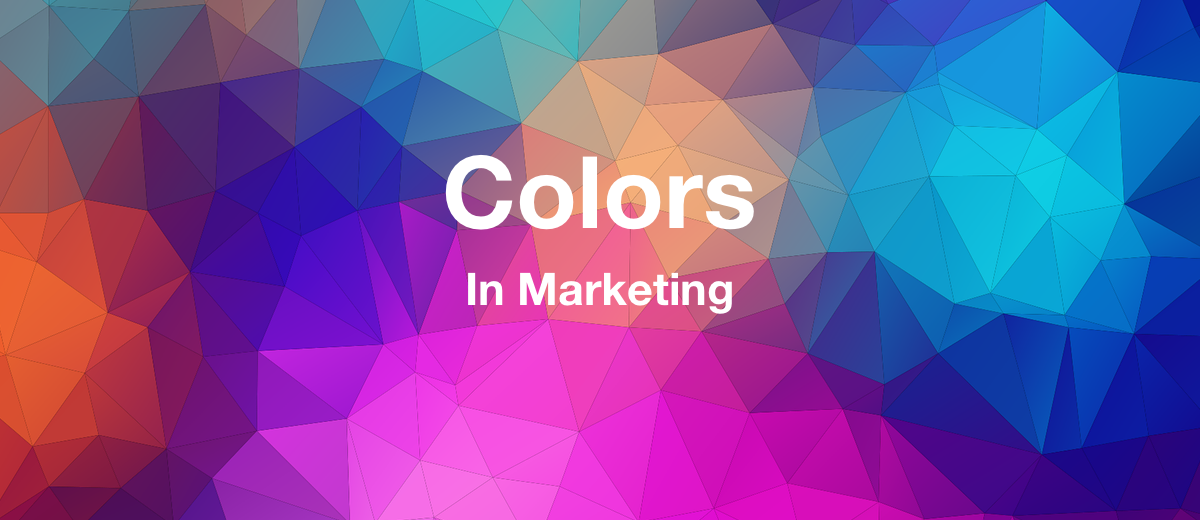The Importance Of Colors In Marketing And Advertising
Colors in marketing are one of the most promising yet controversial trends. As you know, color is the most important source of information for any person, since people perceive the world around them visually and make most decisions based on the picture they see.
Content:
1. Features of human color perception
2. The meaning of colors in advertising
3. What colors inspire confidence and drive sales
4. Conclusion. Colors are very important
Therefore, we decided to write an article about the psychology of color in marketing, advertising and branding. From it you will learn about how colors are perceived by people, what certain colors mean, which ones inspire confidence and promote sales. We will also talk about how to choose the right colors when creating a logo and corporate identity of your company.
Features of human color perception
The perception of colors is a very individual criterion, which directly depends on a number of personal factors. These include mentality and culture, character type, stereotypes, childhood associations and the life experience of a particular person. Because of this, the reaction of several people to the same colors can be diametrically opposed, as they will cause them different subjective sensations.
Color and psychology are inextricably linked. In 1949, the Swiss psychotherapist Lüscher developed a method for studying human personality based on color preferences, which later became known as the Lüscher test. It is considered a simple and effective method for determining the psychophysiological state of a person, their level of activity and stress, communication skills and other personal criteria based on their choice of certain colors and shades.
In addition, do not forget about the differences in the perception of colors in different cultures of the world. It is especially noticeable when comparing color values for people of Western and Eastern civilization. For example, in European culture, red is considered the color of love and passion, but it can also mean aggression and violence. And white symbolizes purity, freshness and innocence. While in China, red means good luck, success, prosperity and wealth, and white is a symbol of mourning and is associated with death.

However, over the past decades, science has made a tangible breakthrough in the field of studying the effects of colors on human psychology. In particular, this is done by a special branch of science called coloristics, which studies colors, their nature and characteristics. In addition, color scientists explore the psychology of color perception by studying the reactions of the human psyche to various colors, their shades and combinations.
However, the importance of color in advertising is very significant. According to several studies, the color of a product in 85% of cases affects a person at the time of making a purchase decision. The researchers also concluded that color advertising is 26% more effective than black and white. And experts at Xerox say that having color illustrations or other graphics in business documents boosts sales.
The meaning of colors in advertising
In the next section of our article, we will briefly discuss the meaning of a number of the most popular colors. Here you will also learn about how you can use certain colors in marketing and advertising. So let's get started:
Red. Many people are interested in what red means, because it is rightfully considered one of the brightest and most widespread colors. The psychology of red is rather ambiguous, because it is able to evoke both positive and negative emotions. This color has a very active dynamics and even dominant properties, it is associated with energy, passion, strength, speed. However, often the red color indicates the threat, danger and aggression.

At the same time, red clearly belongs to the selling colors, it actively attracts attention and creates an effect of urgency, which allows you to effectively use it to draw attention to promotions, discounts, new products, etc. It is also believed that red is an appetizing color, which is why it is often used in their logos and advertising by food brands: McDonald's, Coca Cola, etc. In addition, it is considered very suitable for the entertainment industry, which is successfully used by the “sharks” of this market: Netflix, YouTube, etc.
Orange. No less bright and eye-catching, but more calm and friendly color, unlike red. Orange refers to those colors that inspire confidence, it is also able to stimulate joyful and positive emotions, and also motivate. As for the negative factors of this color, according to some studies, orange can symbolize cheapness. Therefore, it is more suitable for brands from the mass market category, rather than the premium segment.

Of the well-known world brands, the Amazon e-commerce platform, the Mozilla Firefox Internet browser, the British low-cost airline EasyJet and the French telecom operator Orange use orange in their logos. But the combinations of red and orange in their logos were chosen by the MasterCard payment system and the Chinese e-commerce site AliExpress.
Yellow. This color is also one of the brightest and most noticeable, it is also considered a symbol of optimism, joy, happiness and sunshine. In addition, yellow is directly associated with warmth and comfort, and also denotes energy and movement. On the other hand, this color can symbolize irresponsibility and instability, and in combination with black, it often denotes danger (as a symbol of high voltage, radiation, etc.).

The ability of yellow to attract attention makes it a very popular color in marketing: for signs, discounts, special offers, etc. This color is very effective for promoting brands from the field of youth clothing, food, leisure and entertainment products. It can be seen in the corporate identity of McDonald's, DHL, Hertz, Nikon, Shell and many other well-known companies.
Green. Many are interested in what green means, as many well-known companies often choose it for their logos and corporate identities. Combining the color with a fun logo font they get a memorable brand look. It is considered a symbol of health, purity and freshness, nature and environmental friendliness, youth and harmony. As for the meaning of green in psychology, here it is perceived as an open and friendly color, but it can also symbolize weakness, envy and boredom.

Green color in advertising is a success in the fields of health, proper nutrition, ecology, medicine and cosmetology. With it, you can focus on the naturalness and environmental friendliness of products, care for nature and other current trends. Green is present in the symbols of brands such as Yves Rocher, iHerb, Perrier, Starbucks, BP, Android, XBox, etc.
Blue. It is the color of calmness and the color of trust, which has a pronounced calming property and is associated with feelings such as loyalty, security, stability and serenity. However, it can symbolize isolation, indifference and unattractiveness. Blue also denotes freshness and purity well, so it is often used in advertising of cosmetics, household chemicals, water and other similar products.

The blue color is also considered a symbol of reliability, which is why it is very effective in promoting banking and financial services, IT products, insurance and travel companies, auto concerns. But food brands should avoid this color, as there is a perception that it reduces appetite. Blue is featured on the logos of Facebook, Ford, Samsung, PayPal, Dell, American Express, Intel, Visa, Volkswagen, Nivea, Allianz and a number of other well-known brands.
Black. Black belongs to the classic colors and is associated with such qualities as strength, status, mystery, elegance, luxury, rigor, stability, power and authority. Of the negative properties of this color, mourning, coldness, depression, aggression are distinguished. Black color is best suited for advertising exclusive, expensive products and luxury brands.

With it, you can effectively draw attention to detail, and the contrasting combination of black and white is especially popular. Black is considered the most selling color for promoting cars, watches, gadgets, alcohol, sportswear and shoes. It can be found at the logos and corporate identity of Nike, Puma, Adidas, Chanel, Boss, L'Oreal, Jack Daniels, Ralph Lauren, Apple, Moet and other brands.
White. Finally, it is worth talking about what white means in psychology and advertising. This is another classic color that symbolizes purity, freshness, tranquility, peace, solemnity and security. On the other hand, it can mean emptiness, coldness, sterility, detachment and indifference.

White color is ideal for brands with an emphasis on minimalism, simplicity and elegance. It is often used in advertising to show the freshness and safety of the product, and the classic combination of black and white is especially popular. Of the well-known brands, white is present on the logos of Apple, Sony, Tesla, Lexus, Prada, Cartier, Burberry, Cartier, Zara, Kappa, etc.
Purple. This color also has a certain popularity, although it is not as widespread as the classic colors. Psychologically, purple is associated with maturity, wisdom, freedom, and wealth. However, it can also symbolize anxiety and depression. Purple is considered quite extravagant, so it is hardly suitable for companies with a traditional philosophy. On the other hand, purple helps express originality and creativity, making it appropriate for respective brands and their products.

It is believed that purple and its shades (violet, lilac) are much more popular with women than men. Therefore, it is a selling color for products with a predominantly female audience. For example, it is purple that is used in their logos by the well-known chocolate manufacturers Milka and Cadbury, the brand of souvenirs and gift cards HallMark, as well as FedEx, YAHOO, Taco Bell and a number of other well-known brands.
What colors inspire confidence and drive sales?
While everyone has their own particular favorite color, some colors are more trustworthy and help sell products and services better than others. At the same time, if you want to know which colors inspire confidence, then there is no universal answer to this question. Much depends on various additional factors, namely:
- Product theme
- Brand positioning
- The target audience
- Desired target action, etc.
However, there are some common trends in this area that can be taken into account when preparing an advertising campaign. For example, blue is traditionally considered the color of trust, calmness and order, and it is equally well received by both men and women. That is why a number of large international corporations use it in their symbols: Intel, Facebook, Dell, PayPal, IBM, HP, etc.
In addition to blue, green (mainly for men) and purple (mainly for women) are also considered the most soothing colors. If your brand and product is aimed exclusively at a female audience, then pink would be a good choice for it. No wonder it can be seen on the logos of Victoria's Secret, Cosmopolitan and other "female" brands.
A/B testing is considered to be a very effective way to find the optimal color for a logo or corporate identity. With it, you will allow your audience to choose which color they like more. In addition, you do not have to limit your brand to a single color, instead you can always use several colors in your logo or packaging at once. The main thing is not to overload the design with excessive colors, this will create a feeling of confusion and scare away many potential customers.
Conclusion. Colors are very important
Colors are of no small importance not only for human psychology, but also for the promotion of brands and products. Studies have shown that most people form an opinion about a product within 60-90 seconds of looking at it, and for 85% of respondents, the first impression directly depends on the color of the product or its packaging.
When choosing corporate colors for a new brand or product, a number of factors should be taken into account, including their theme, positioning and specifics, characteristics of the target audience and its targeted actions. Another effective way to choose the best selling color for a particular product or service is A/B testing. It will help to preliminarily study the attitude of your target audience to a particular color, and choose the best option.
Routine tasks take a lot of time from employees? Do they burn out, do they not have enough working day for the main duties and important things? Do you understand that the only way out of this situation in modern realities is automation? Try ApiX-Drive for free and make sure that the online connector for 5 minutes of setting up integrations will remove a significant part of the routine from your life and free up time for you and your employees.

